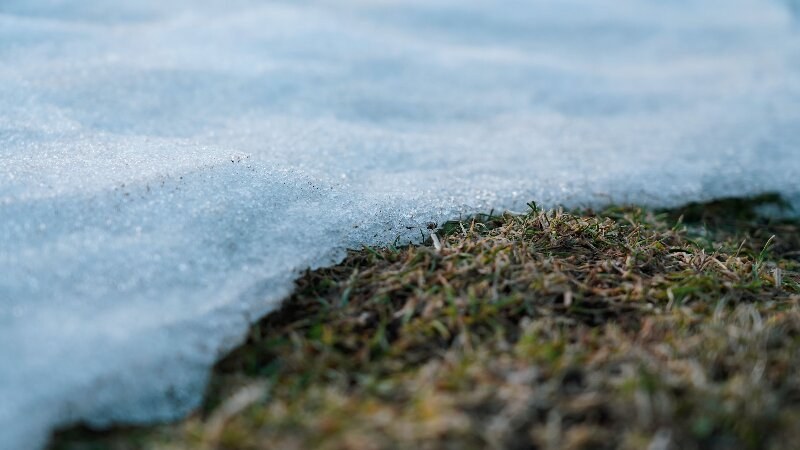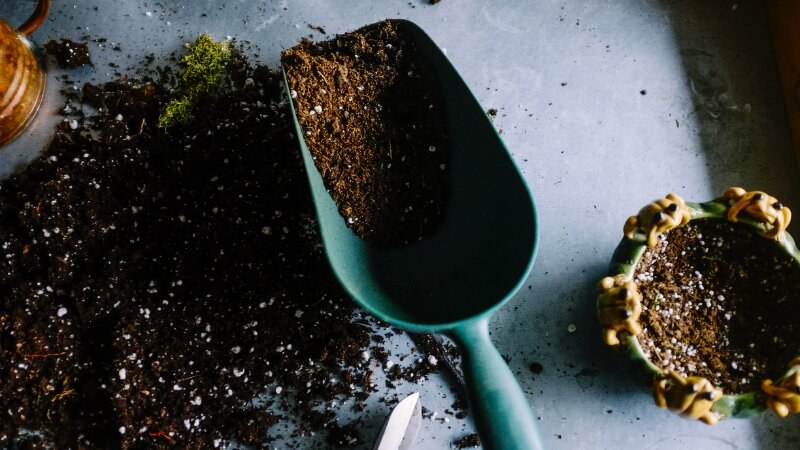Seasonal Fertilizer Applications - Winter Lawn Preparation
Reading time: 7 minutesWinter lawn care is somewhat of a mystery for homeowners, but preparing your lawn for winter is one of the most important things you can do to protect it from the extreme weather and cultivate a vibrant, healthy lawn in the spring.
Winter fertilizer, also called winterizer, is formulated to provide your lawn with the specific nutrients it needs for blade hardiness and strong root growth through the dormant season.
Here’s how it works and how the qualified lawn experts at Green Drop can help you get your lawn ready for the ice, snow, and frigid temperatures ahead.

Winter Fertilizer 101
Winters in Western Canada are particularly hard for lawns. Precipitation naturally slows, and the harsh conditions make it more challenging for grass to store and utilize energy adequately. On average, the temperatures in Alberta during winter range between 12 to -2 degrees, and snow lasts from November to March.
Winter fertilizers are designed to provide your lawn with additional carbohydrates to help the root system survive and grow through the cold season. Using a winterizer ahead of time is a key part of your lawn care and works to protect your grass long after it’s been applied.
Myths About Winter Fertilizers
Many people have misconceptions about the different types of available lawn fertilizers and how they should be used. Here are some of the most common mix-ups:
Winterizer Contain Special Compounds That Other Seasonal Fertilizers Don’t
Contrary to popular belief, there are no special chemicals or ingredients in a winter fertilizer. It contains the same nutrients as any other fertilizer, just in different amounts. The specific ratio of nutrients is designed to support the switch from blade to root growth, which is vital to fortify your lawn for the near-glacial conditions to come.
You Can Use Epsom Salts When Preparing a Lawn for Winter
If you’ve ever heard that you can use Epsom salts instead of fertilizer to help prepare your lawn for harsh weather, this couldn’t be further from the truth. Epsom salts don't contain any nutrients your lawn needs, like nitrogen, phosphorus, or potassium. In fact, it only contains sulphur and magnesium, neither of which help to condition the soil or protect your lawn.
Organic Fertilizers Are Better for Winter Lawn Prep Than Synthetic
Many people associate the words “synthetic” or “manufactured” with “harmful,” but that’s not necessarily the case, especially when it comes to winterizers.
Organic fertilizers contain large particles that must be broken down for your lawn to access the nutrients within. This takes time. Synthetic fertilizer, however, is water soluble and makes critical nutrients like nitrogen and potassium immediately available to your lawn’s root system.
Benefits of Winter Lawn Prep
Preparing your lawn for the arctic climate is potentially even more important than fertilizing your grass in the spring and summer. Winter lawn prep has numerous benefits, like:
- Nurturing your lawn’s root system, which never stops growing
- Helping to repair the damage done to the turf during summer sports and activities
- Preventing drought, which is more common in the winter than in other seasons
- Ensuring enough nutrients are stored for a vibrant spring return
- Improving winter hardiness so the grass stays lush and green as long as possible

Know Your Winter Nutrient Ratios
The nutritional needs of your lawn vary from season to season, so it's important to know how much of which nutrients your grass needs and when they should be applied.
On the front of your fertilizer package, you should see three numbers with dashes between them. The first number represents nitrogen, the second phosphorus, and the third is for potassium. This tells you how much of each nutrient is in the fertilizer. For example, a 10-0-14 formula has 10% nitrogen, no phosphorus, and 14% potassium.
The biggest difference between winter fertilizers and other seasonal fertilizers is how much of each nutrient it contains. Fall fertilizer contains more potassium than spring and summer fertilizers, while winter fertilizer contains more nitrogen. Applying winterizer to your lawn before soil temperatures drop too low helps give your lawn the boost it needs right before the grass goes dormant for the season.
Frequently Asked Questions
What time of year should I fertilize my lawn to prepare for winter?
In most cases, it’s a good idea to apply winter fertilizer to your lawn about 4 to 6 weeks after you’ve applied your early fall fertilizer, well before the winter is underway. This is when your lawn naturally switches from blade growth to root expansion ahead of the cold weather, so it’s the perfect time to use a fertilizer that facilitates this process.
How many times should I fertilize my lawn before the winter?
In most cases, a lawn only needs one application of each seasonal fertilizer. Too much fertilizer can burn your grass. Plus, there’s no need for that many nutrients when your lawn is just hunkering down to survive the plummeting temperatures.
What does nitrogen do for a lawn before winter?
Winter fertilizers contain water-soluble nitrogen to help protect and promote root growth before the soil becomes too cold and hard. It helps your grass store the carbohydrates it needs during the winter and for its spring return, allowing it to withstand frigid temps, ice, and snow. Be sure not to apply too much nitrogen, though, since overdoing it can cause too much rapid growth before winter and stress your lawn.
Is phosphorus important for lawns before winter?
Phosphorus is used the least for lawns in any season, but it still plays an important role in promoting the health and vitality of your lawn. This compound helps the grass to grow thick and dense, which retains more water and keeps your grass looking lush. It also facilitates energy transfer before dormancy, which is crucial for later in the winter when your lawn relies on its energy reserves to survive.
How does potassium work in the winter to fertilize a lawn?
Potassium is necessary to complete critical cell functions like photosynthesis. When applied to your lawn before the winter, this compound works to create resilience so your lawn can better withstand the difficult environmental conditions of Western Canada, including sub-zero temperatures, drought, and lawn diseases.
It also helps your grass regulate water uptake, which is important as root systems are more prone to drying out in cold weather than in the spring and summer.

Should I test my soil before applying winter fertilizer?
Ideally, you should do a soil test before applying fertilizer so you know exactly what you're working with and what you should add. You may or may not need to add certain nutrients to balance the potassium, nitrogen, and phosphorus ratio. A soil test can tell you how much of which nutrients to add so you're not giving your lawn too much of one or too little of another.
What temperature should my soil be to winterize my lawn?
The temperature at which you apply winterizer to your lawn also plays a role in the success of your fertilization efforts. Winter fertilizer is less effective when the soil is above 70 degrees or below 55 degrees Fahrenheit. Calculating the conditions of your soil and applying the right kind of fertilizer to get your lawn ready for winter can be intimidating, but a professional lawn care specialist can help.
Should I water my lawn before I fertilize it for the winter?
When you apply fertilizer matters, so it's a good idea to keep an eye on the weather and plan to fertilize in between weather events. If you fertilize too soon after a rain or right before one, the water runoff can prevent your lawn from getting all the nutrients you're giving it. You also don’t want to fertilize a too-dry lawn, since this also prevents your grass from absorbing the important components.
What are slow-release winter lawn fertilizers?
Slow-release winter lawn fertilizers break down over time and release small bits of nutrients as they do so. This helps distribute nutrients more evenly over a period of time and prevents the overload of individual nutrients. However, because of the timed release mechanisms, it takes longer for grass to perk up after application.
Get Expert Help Preparing Your Lawn for Winter with Green Drop
At Green Drop, we know winter lawn care. We specialize in helping homeowners cultivate beautiful lawns and can help you prepare your lawn to survive the cold. Contact us to schedule a good time for one of our extensively trained GreenKeepers to visit your home.

